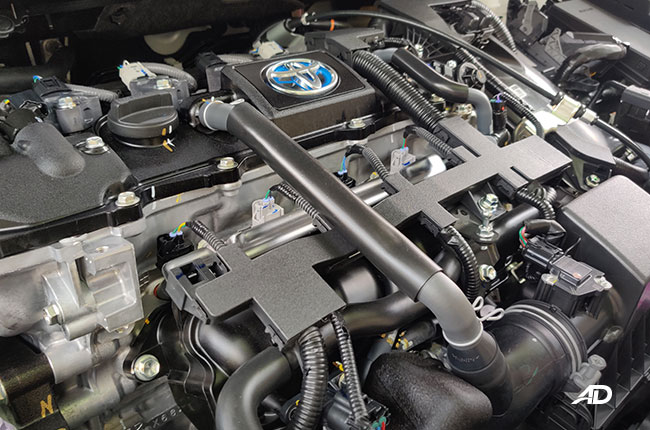
Often seen in hybrid cars and some gasoline-only models, the Atkinson Cycle engine is often advertised, but never fully expounded upon by the brands that sell them. The long-story-short summary of it is that the engine is more fuel-efficient than a standard gasoline motor.
While the bottom line is all that matters when you make your vehicle purchase, it’s good to know what makes the Atkinson cycle different so you won’t get bombarded with wrong information when someone thinks they know what they’re talking about. Knowledge is power, my friends.
Brief history
The internal combustion engines you see today are the result of over a century’s worth of innovation and patents. The most prominent combustion cycle we see on the road today is the Otto four-stroke combustion engine, which James Atkinson knew about and wanted to improve upon. After a few dealings with the patent office, the Atkinson engine was patented in 1882, but it didn’t take off. However, his development would become more widespread in the 21st century, where fuel efficiency is a thing.
Examples

You’ll more commonly find an Atkinson cycle engine in a hybrid vehicle, however, certain models like the Kia Seltos, and Hyundai Kona, are both equipped with these kinds of engines even without a hybrid motor to assist.
The reason why Atkinson cycle motors are used in hybrids is because of their fuel efficiency, and the fact that at lower RPMs, these engines aren’t as torquey as a traditional Otto cycle. That’s the reason why the Seltos and the Kona get bigger engines compared to their other rivals who opt for traditional motors—with or without turbochargers in lower displacements.
How it works

Before we get into it, let’s review the combustion cycle in an engine. You may remember it with a simple phrase: Suck, Squeeze, Bang, and Blow, which are oversimplifications—and frankly, crass words—to denote the intake, compression, combustion, and exhaust strokes of a four-stroke gasoline engine.

Traditional Otto cycle engines will close the intake valve as soon as the piston starts its compression stroke. In an Atkinson Cycle motor, the intake valve stays open until the piston is about 20% to 30% of the way through its compression stroke, or on the way up.
Why is it more efficient?
Because the combustion chamber isn’t chock full of air, there is a low engine speed power reduction. The result is a lower power engine compared to a traditional Otto cycle by alleviating the load on the piston in the compression stroke by giving it a little more room to breathe, the Atkinson Cycle motor is more efficient. Because there is less air in the combustion chamber, the injector doesn’t need to supplement as much fuel. Remember, the engine also relies on its own power to keep the combustion cycle going. Essentially, an Atkinson cycle engine fine-tunes the combustion process in order to minimize the parasitic power loss that most normal engines experience at the expense of a little more power.
Latest Features
-
An all-electric future: The Porsche Macan Electric / Featured Article
Porsche’s Macan goes all-electric; it’s a new beast with an electrified heart, yet unmistakably Porsche in performance and spirit.
-
Which Kia should I buy? / Featured Article
We’re here to help you decide which Kia vehicle is best for you, whether it’s a sedan, crossover, or minivan.
-
Why Lynk & Co is a good option for luxury car buyers / Featured Article
Lynk & Co offers premium value for those exploring the luxury market.
Popular Articles
-
Electric Vehicles in the Philippines for under P1 million
Jerome Tresvalles · Aug 19, 2025
-
Top 3 Cars For Every Lifestyle—What Cars Are Right For You? | Behind a Desk
Caco Tirona · Apr 24, 2024
-
5 Tips to Maximize Fuel Efficiency
Jerome Tresvalles · Sep 09, 2024
-
Five driving habits that are draining your fuel tank
Jerome Tresvalles · Jun 24, 2025
-
Can engine braking harm your engine?
Jerome Tresvalles · Sep 11, 2025
-
Do electric cars even need maintenance?
Jerome Tresvalles · Oct 23, 2024
-
Best vehicles for an active outdoor lifestyle
Shaynah Miranda · Jul 25, 2024
-
How to drive different types of vehicle transmissions
May 23, 2024
-
5 easy ways to keep your car interior clean
Allysa Mae Zulueta · Nov 15, 2021
-
How to survive Metro Manila traffic
Earl Lee · Aug 16, 2022




